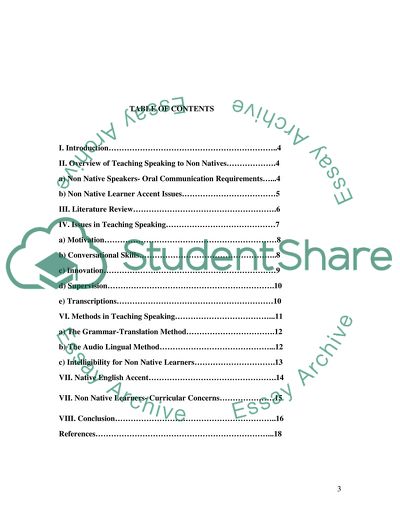Cite this document
(“Improving Speaking Skills of Non-Native Learners Assignment”, n.d.)
Improving Speaking Skills of Non-Native Learners Assignment. Retrieved from https://studentshare.org/education/1747703-issuesproblems-in-teaching-speaking
Improving Speaking Skills of Non-Native Learners Assignment. Retrieved from https://studentshare.org/education/1747703-issuesproblems-in-teaching-speaking
(Improving Speaking Skills of Non-Native Learners Assignment)
Improving Speaking Skills of Non-Native Learners Assignment. https://studentshare.org/education/1747703-issuesproblems-in-teaching-speaking.
Improving Speaking Skills of Non-Native Learners Assignment. https://studentshare.org/education/1747703-issuesproblems-in-teaching-speaking.
“Improving Speaking Skills of Non-Native Learners Assignment”, n.d. https://studentshare.org/education/1747703-issuesproblems-in-teaching-speaking.


